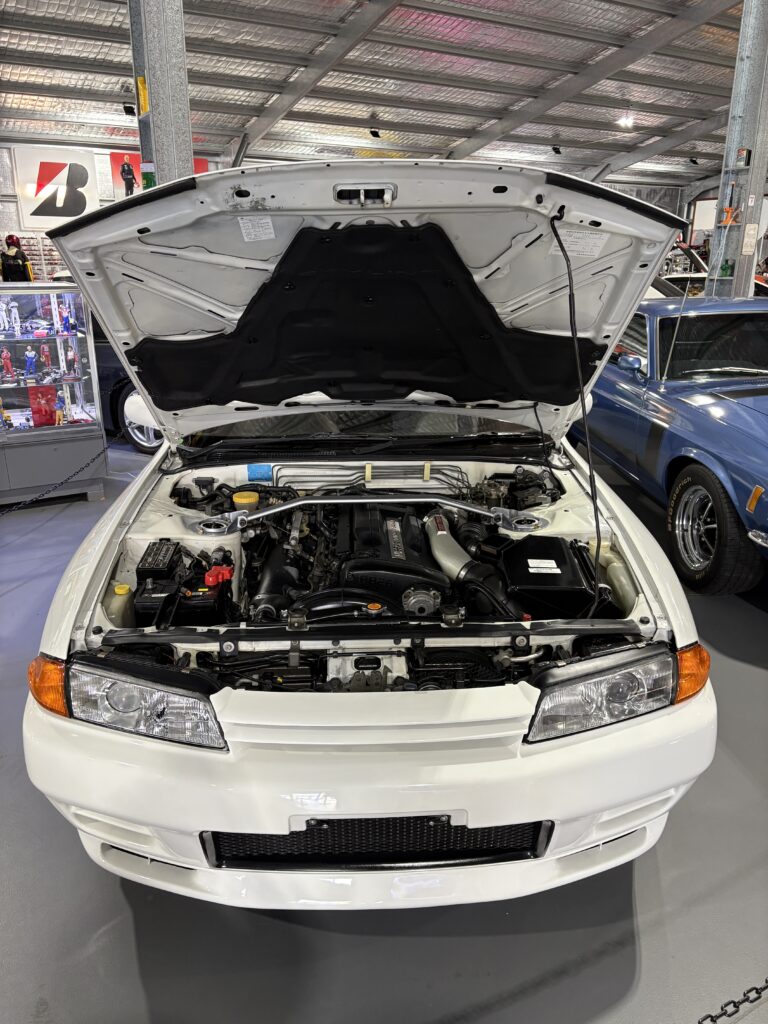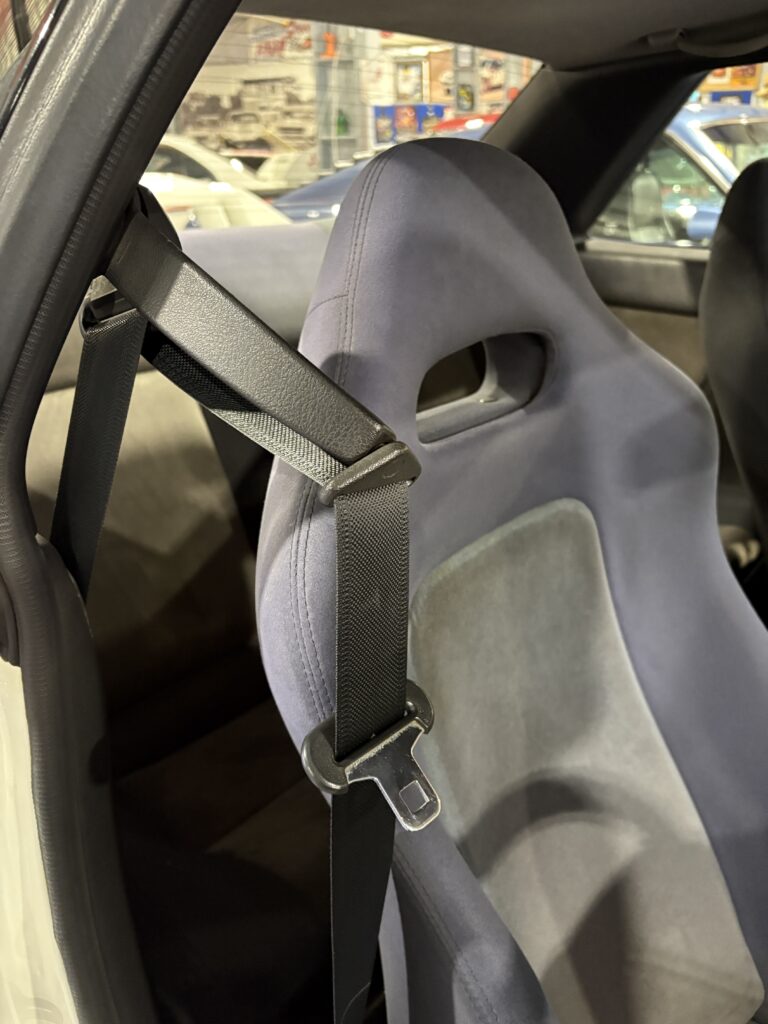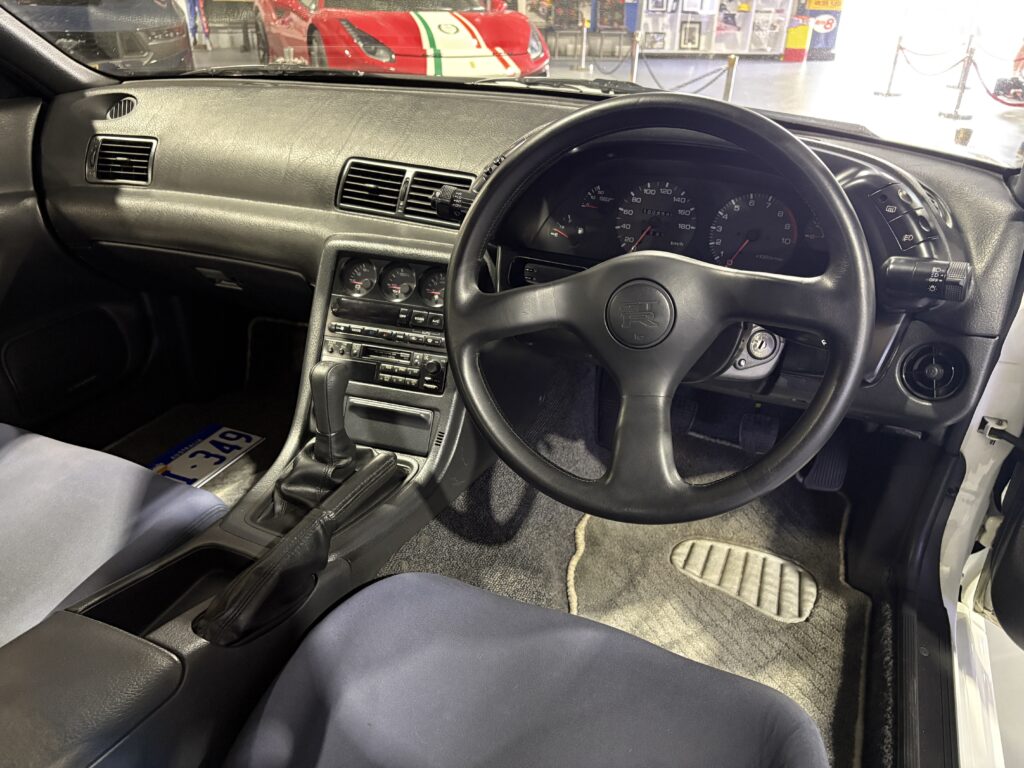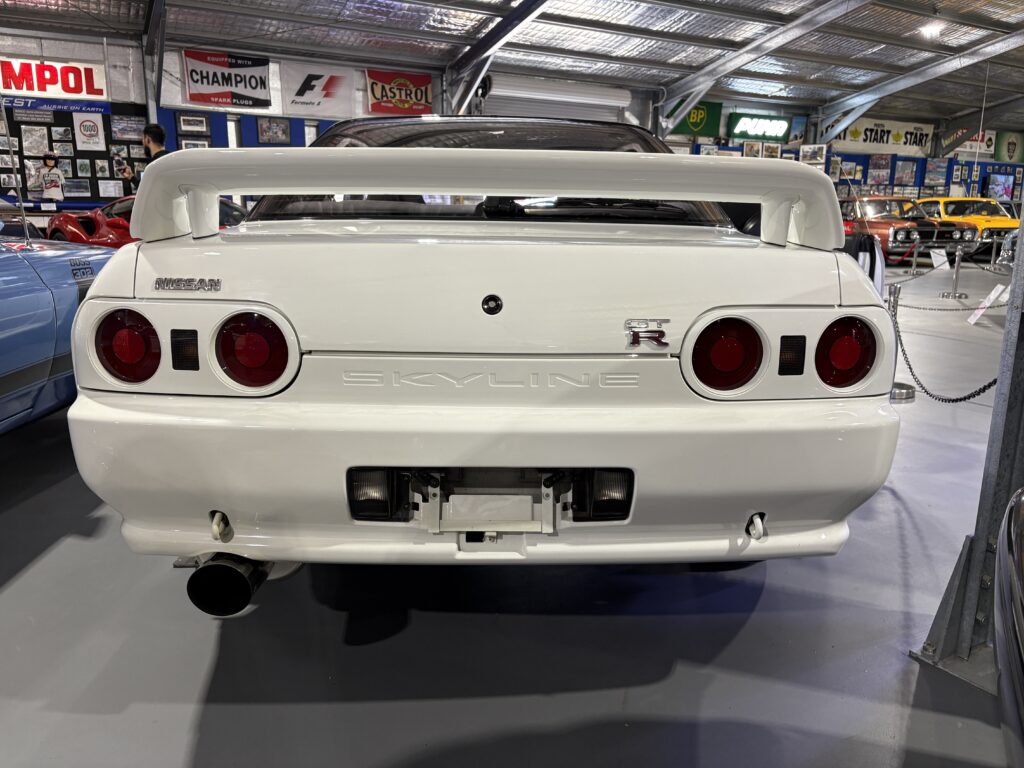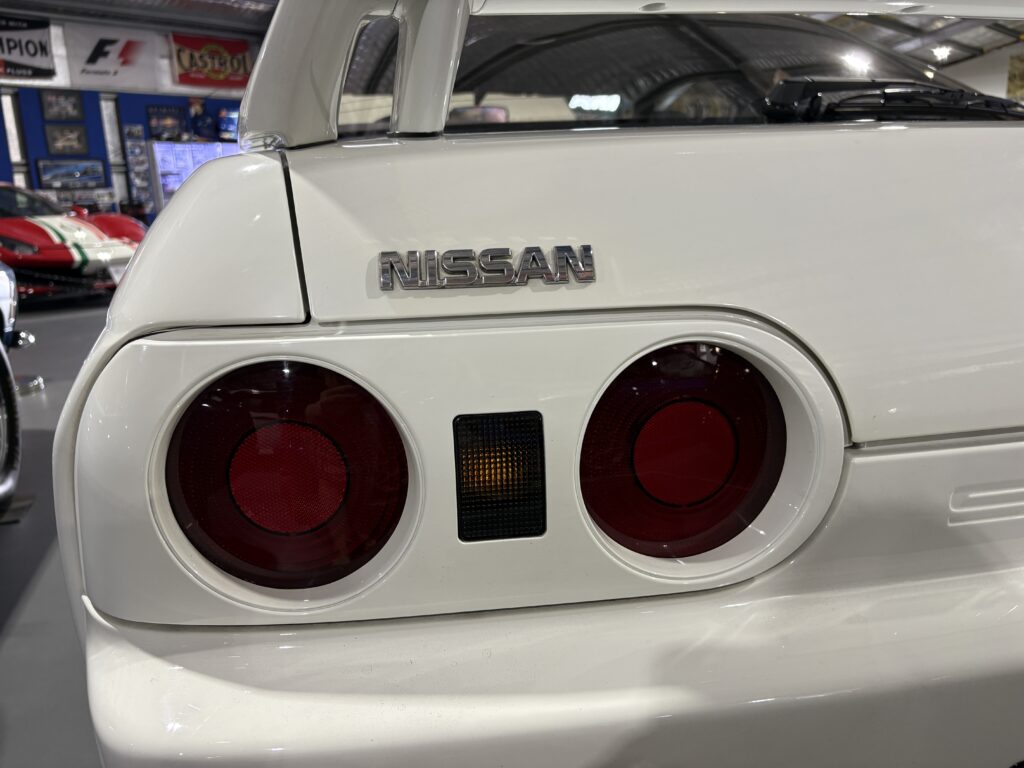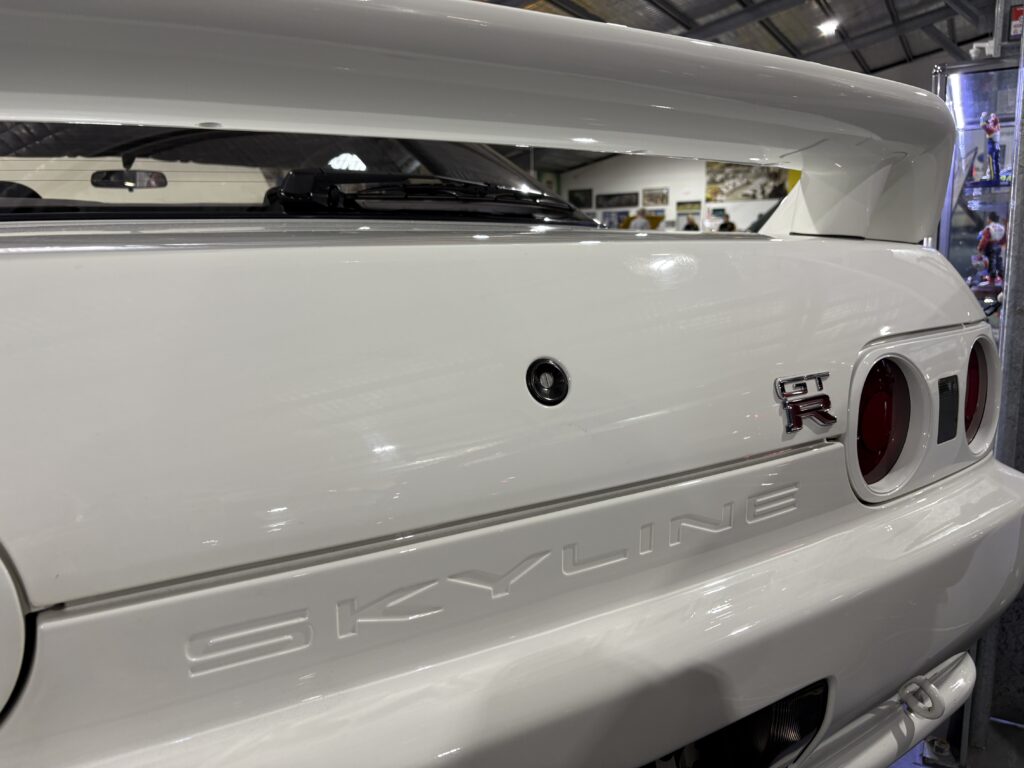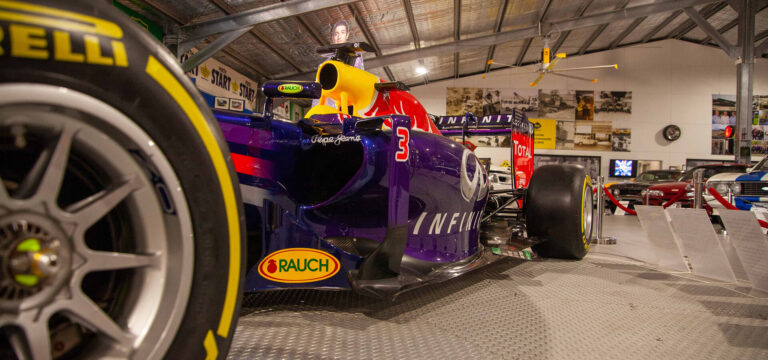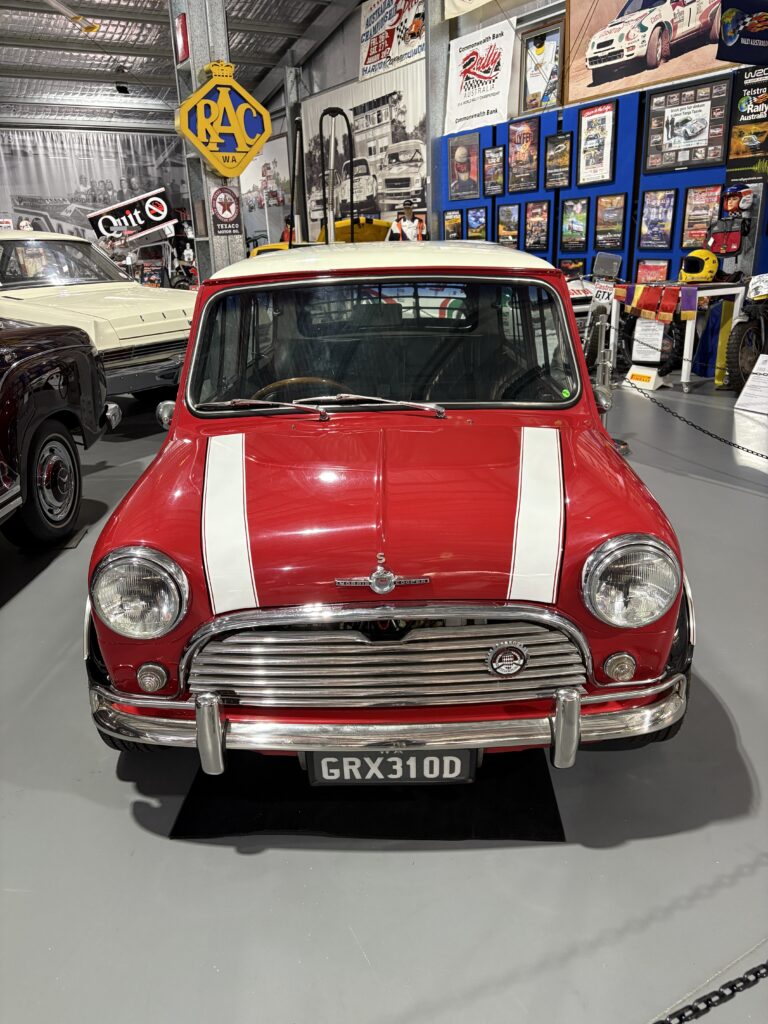The Allure of JDM Cars
JDM (Japanese Domestic Market) cars have earned a devoted following in Australia. These vehicles were designed and built for the Japanese home market, often featuring unique trims, specialty performance parts and tuning, and styling not available in export models.
The appeal of JDM cars comes from their rally and motorsport pedigree, renowned reliability, and a thriving local community inspired by movies, motorsport, and a quest for standout driving experiences.
Australia’s right-hand drive roads and vibrant car culture have made it easy for enthusiasts to import and enjoy these rare machines, and JDM vehicles remain highly sought after for their blend of value, performance, and individual character and a much loved addition to our museum collection.

Iconic JDM Cars on Display at the Motor Museum of Western Australia
1992 Nissan R32 Skyline GTR
The 1992 Nissan R32 Skyline GTR stands as a legendary icon in the world of Japanese sports cars, renowned for its cutting-edge technology, breath taking performance, and motorsport dominance.
Now proudly displayed at the Motor Museum of Western Australia, this remarkable machine represents not just a car, but a defining chapter in automotive history.

Engineering Excellence Under the Hood
At the heart of the R32 GTR lies Nissan’s famed RB26DETT engine — a 2.6-litre inline six-cylinder equipped with sequential twin turbochargers and an intercooler. Officially rated at 206 kW (approximately 276 horsepower), enthusiasts know the true output commonly ranges between 260 to 270 kW (around 350 horsepower). This powerhouse was coupled with Nissan’s revolutionary ATTESA E-TS all-wheel-drive system, featuring a variable torque-split transmission that primarily powered the rear wheels but could transfer up to 50% of power to the front when needed, delivering exceptional grip and handling on all surfaces. The car also used a five-speed manual gearbox and a limited-slip differential to maximize control.
Thanks to these advanced systems, the R32 GTR could accelerate from 0 to 100 km/h in approximately 5.6 seconds and could theoretically reach top speeds around 245 km/h (152 mph), though its true top speed was capped electronically at 165 mph (approximately 265 km/h) for safety reasons and regulations.
Motorsport Dominance and “Godzilla” Legacy
Nissan designed the R32 GTR with one clear goal: to dominate motorsport. From its debut in 1989, it quickly stamped its authority on Group A racing in Japan and beyond. Its performance and reliability led it to win all 29 rounds of the Japanese Touring Car Championship it entered, cementing its status as the “All-Conquering” R32.
In Australia, the R32 GTR gained the formidable nickname “Godzilla” due to its monstrous performance and its domination over local V8 rivals, Holden and Ford. The R32’s back-to-back wins at the Bathurst 1000 races in 1991 and 1992 were particularly controversial, leading to its eventual ban from Australian motorsport to preserve the competition’s focus on rear-wheel-drive V8s. This ban paved the way for the birth of the Australian Touring Car Championship in 1993, which evolved into the V8 Supercar Championship, Australia’s premier motorsport category.
A Cultural and Automotive Icon
The R32 Skyline GTR’s legacy extends far beyond racetracks. It reshaped what enthusiasts around the world expected from a sports coupe and influenced automotive design globally. Its combination of lightweight chassis, turbocharged power, and all-wheel drive made it a benchmark for performance and precision. Even today, it remains one of the most revered Japanese cars, celebrated for its blend of technology and raw driving excitement.
1998 Subaru Impreza WRX 22B STi
The Holy Grail!

The Subaru Impreza WRX 22B STi stands as one of the most coveted performance cars of the 1990s, and is widely referred to as the “holy grail” of the WRX lineage.
Developed to celebrate both Subaru’s 40th anniversary and the marque’s trio of World Rally Championship manufacturers’ titles, the 22B debuted in 1998 as a limited edition, instantly iconic model. Its recognition was worldwide, but Australia managed to secure just five official examples out of the mere 425 units produced—making it exceptionally rare on local roads.
Stylistically, the 22B began with the WRX Type R coupe’s shell, further enhanced with motorsport-inspired, wide-body panels designed in direct homage to Subaru’s World Rally Car. The model features distinctive bulging guards, unique bumpers, an adjustable rear wing, and those signature gold 17-inch wheels, all painted in Subaru’s trademark Sonic Blue. Inside, 22B models received sports seats, unique badging, and a purposeful yet comfortable interior fit for spirited driving and daily usability. The 22B’s design language and details continue to inspire and distinguish it as a standout, both at car meets and on rally stages.
Under the bonnet lies the heart of the legend: an enlarged and specially-prepared 2.2-litre “EJ22G” turbocharged flat-four engine (2212cc), producing 206kW (280PS) at 6000rpm and 363Nm at 3200rpm, sent to all four wheels via a five-speed manual transmission and Subaru’s trademark all-wheel-drive technology. The block is derived from a closed-deck Group A spec, paired with forged pistons, robust internal components and a ball-bearing IHI turbo. The 22B’s real-world performance was staggering for its time, achieving 0–100km/h in under five seconds, and offering handling and confidence honed in the crucible of world rally competition.
2000 Mitsubishi Lancer Evolution VI
Tommi Makinen Edition (TME)
The Mitsubishi Lancer Evolution VI Tommi Makinen Edition (TME) was created to celebrate the Finnish rally champion Tommi Makinen’s unprecedented four consecutive World Rally Championships from 1996 to 1999 driving for Mitsubishi. Launched in late 1999 and produced in limited numbers, the TME is often referred to as the Evolution 6.5, highlighting its evolution beyond the base Evo VI model. Production was capped globally at 2500 units, with only about 100 officially imported into Australia, split evenly across silver, black, red, and white examples, making it highly collectible locally.
Mechanically, the TME featured a number of upgrades over the regular Evo VI designed to improve performance, reliability, and driving dynamics. Key enhancements included a titanium turbocharger with a unique twin-scroll design, a free-flowing exhaust system, and a revised intake that helped boost responsiveness. The suspension was lowered by 10mm with a revised roll centre, paired with a quicker steering rack for sharper handling and cornering precision. The TME also incorporated a baffled fuel tank to prevent fuel surge during high-G cornering—a feature reflecting its rally-derived engineering.
The imposing bodywork of the TME set it apart visually, with a unique front bumper designed for better airflow, subtle rally-inspired graphics, and white 17-inch Enkei wheels. Inside, enhancements included Recaro seats embroidered with Tommi Makinen’s name, a leather Momo steering wheel and gear knob, and a heel-and-toe pedal setup tailored for performance driving. The overall build emphasized a raw, hard-edged driving experience, focused more on function than luxury—fitting for a car closely tied to competition and motorsport heritage.
Performance-wise, the TME’s 2.0-litre turbocharged inline-four delivered an official output rating of 280 horsepower (around 276 hp as per the gentleman’s agreement) and 373 Nm of torque. Despite weighing just over 1260 kg, the compact sports sedan was capable of 0-100 km/h in approximately 4.5 seconds, putting it in supercar territory for the time and making it one of the fastest accelerating cars available in Australia when new. Its visceral driving dynamics combined with its rally provenance have ensured that the Evolution VI TME remains a sought-after collector’s item and a benchmark among classic Japanese performance cars in Australia.
1992 Subaru SVX

When Subaru set out to create a world-class grand tourer, the result was the SVX – a striking coupe penned by the legendary Italian designer Giorgetto Giugiaro. Making its debut at the 1989 Tokyo Motor Show, the SVX featured a futuristic “window-within-a-window” glasshouse, hinting at both aircraft inspiration and advanced engineering intent (general nature). Under the bonnet was a 3.3-litre flat-six engine (designated EG33), a unique setup for Subaru, producing 230 horsepower and 309 Nm of torque. All SVXs destined for the Australian market came with a 4-speed automatic transmission and Subaru’s advanced all-wheel drive system, reinforcing the car’s dual personality as both a luxury cruiser and a confident handler in all conditions.
Practicality and comfort were strong points for the SVX as well. The Australian-delivered cars were generously equipped, with a leather interior, power-adjustable seats, climate control, cruise control, quality audio, and all the key luxury mod-cons expected of a premium coupe from this era. The SVX’s grand touring credentials were further underscored by its spacious cabin and excellent all-around visibility, thanks to that signature wraparound glass. The model also introduced Subaru to a new level of refinement, with a smooth and quiet ride, albeit with a thirstier fuel consumption rate, recorded at 10.8L/100km for local variants.
On the road, the SVX offered brisk but not supercar performance for the period, capable of 0–100 km/h in around 7.3 seconds, and a top speed exceeding 240 km/h. The sophisticated suspension and AWD system helped the coupe secure rally accolades as well, notably a victory in the 1991 Alcan Winter Rally, proving its mettle in demanding conditions (general nature). The platform was known for robust engineering, though early production models experienced some transmission reliability concerns, eventually addressed in later versions (general nature).
Rarity contributes significantly to the SVX’s appeal among Australian enthusiasts today. Only 249 examples were officially delivered to the local market, making it a sought-after collector’s item for those interested in unique JDM or classic Subaru models. The car’s combination of Italian design, Japanese engineering, and innovation marks it as a car that is still turning heads.
On Display For A Limited Time
Please note that many of the vehicles displayed at the Motor Museum of Western Australia, including these iconic JDM cars, are on loan to us from private collectors and enthusiasts.
Our displays change regularly to showcase a wide variety of vehicles and motoring history, so if you want to experience these rare and extraordinary cars in person, we encourage you to visit us soon.
Whether you are a passionate car lover or simply curious about automotive heritage, the Motor Museum offers a unique and engaging experience that evolves throughout the year.
Visit Us
For more information about visiting the Motor Museum of Western Australia, including opening hours, ticket prices, and current exhibitions, please visit our Visitor Information page or contact us directly.
We are open every day from 10 AM to 4 PM (closed Christmas Day) at Whiteman Park, 233a Drumpellier Drive, Whiteman, WA 6068.
Tickets can be purchased online for your convenience or directly at the museum entrance.
For enquiries, group bookings, or special events, please call us on (08) 9249 9457 or email manager@motormuseumwa.com.au.
We welcome visitors of all ages and motoring interests and look forward to sharing Western Australia’s rich automotive history with you.

